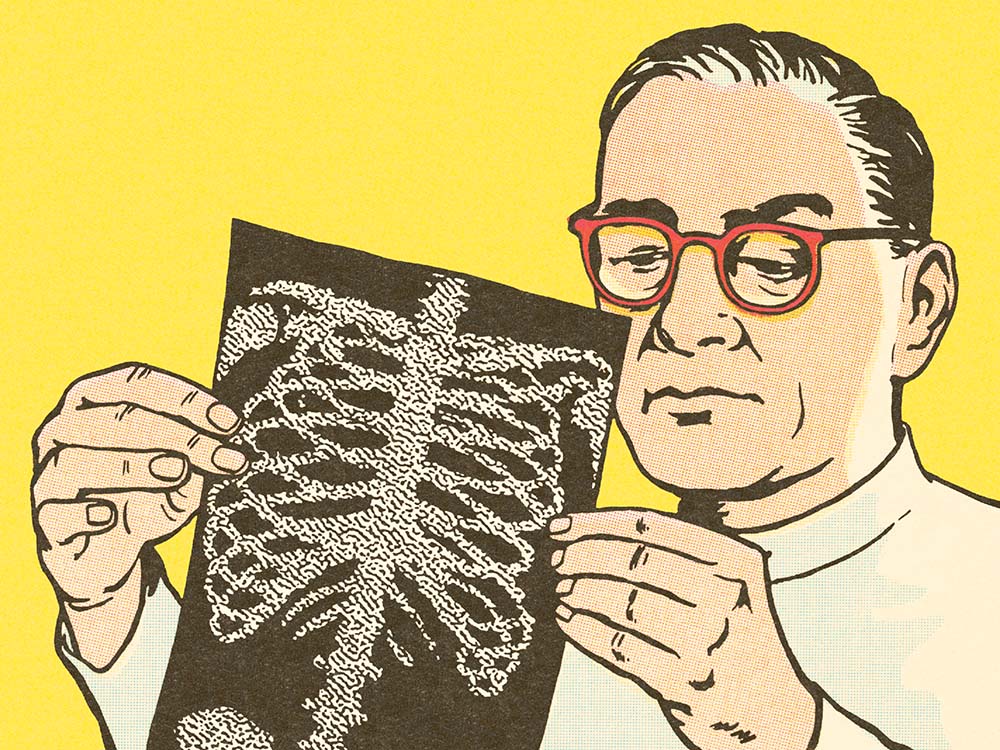Despite stringent restrictions on research, cannabinoid science has grown by leaps and bounds over the last three decades. In 2018, it culminated in the approval of the first FDA-approved, cannabis-derived pharmaceutical. How did we get here?
This article was originally published in Issue 6 of HEMP. Subscribe HERE or find in a local grocery store.
In the early 1990s, seven years into his practice, neurologist Dr. Ethan Russo hit a crossroads in his career. He had to decide whether to continue prescribing increasingly toxic drugs to his patients, which were providing less and less benefit, or to transition his research to traditional plant medicine to try to find a solution for migraine problems.
So Dr. Russo packed his bags and headed to the depths of the Peruvian Amazon, where he could find the greatest number of plants used to treat headaches. While studying in the Amazon, he found a multitude of plants that were effective, but there was a catch. Many of the plants he found beneficial for migraines had one commonality: trace concentrations of dimethyltryptamine (DMT).
DMT is naturally produced in the human brain while we sleep and is believed to create our dream stimulation. In the U.S., the Department of Justice regulates DMT as a Schedule I narcotic, with no known medical benefit. But during Dr. Russo’s studies, he found that the plants containing DMT at very low doses effectively treated headaches. Given the U.S.’s stance against DMT, Dr. Russo knew the chances of commercializing a migraine pharmaceutical using a plant containing it would be nearly impossible.
But while Dr. Russo wrapped up his DMT plant research, California passed Proposition 215, legalizing medical cannabis. After the bill’s passage, the Multidisciplinary Association for Psychedelic Studies (MAPS) quickly recruited Dr. Russo to lead research on studies for the use of cannabis to treat migraines. Over the next several years, Dr. Russo attempted to study these effects. But even though the research was approved by the FDA, the National Institute on Drug Abuse refused to approve the floral material needed to perform the studies.

Despite the roadblocks, Dr. Russo kept writing and editing research related to cannabis, quickly becoming a near-ubiquitous name on published cannabis studies. Eventually, two doctors by the names of Geoffrey Guy and Brian Whittle took notice, requesting Dr. Russo join them at their newly formed company, GW Pharmaceuticals.
The partnership would go on to birth the first FDA approved cannabis medicine, derived from the plant and relying on cannabinoid medicine: Epidiolex.
Defining Cannabinoids
In the retellings of many informal cannabis historians, the medical breakthroughs on cannabis surface in the 1990s. However, in reality, the 1990s burst of cannabis research was only a resurgence of understanding about the plant’s medical and therapeutic attributes.
First, in the early 1800s, Dr. William O’Shaughnessy published some of the first recognized medical applications of cannabis. Then, in the late 1800s, according to Dr. Russo, another doctor by the name of Sir William Osler reported that cannabis was the “best treatment for migraines.” By 1934, the League of Nations reported that cannabis contributed to relief as “a mild counter irritant… for the relief of neuralgic pain; to encourage sleep; and to soothe restlessness,” but these supporting studies were lost with prohibition.
However, none of this 1800s data seemed to matter much in the present day until scientists discovered how endogenous cannabinoids and phytocannabinoids like CBD and THC interacted with the brain and body.
“There are too many [breakthroughs] to count,” Dr. Russo says, but says the biggest breakthrough “would be the way cannabis relates to the endocannabinoid system. Basically, we have this plant that has been used for thousands of years, and this physiological system that is not just in humans. But [this breakthrough] helps explain why cannabis is such a versatile medicine with certain diseases where other pharmaceuticals are not.”
“There are too many [breakthroughs] to count.”
Dr. Ethan Russo
It was in 1988 that two researchers at St. Louis University, Allyn Howlett and William Devane, discovered that mammalian brains have receptor cites that respond to cannabis compounds. More research soon followed, with a 1990 study mapping the DNA sequence of a cannabinoid receptor and a 1992 study finding the first endocannabinoid, produced by the human brain itself.
Dr. Russo describes the basic functions of the endocannabinoid system (ECS) as “eat, sleep, protect, and forget.” Once people started to understand the relationship between the ECS and cannabis-derived cannabinoids in the 1990s, it sparked scientific outcry to remove cannabis restrictions and open pathways for plant research.
Rescheduling requests weren’t met, but this didn’t deter cannabinoid scientists, particularly Dr. Guy and his colleague Dr. Whittle. The duo proceeded to meet with the United Kingdom’s Chief Inspector (of the drugs branch), where they convinced the United Kingdom Home Office to grant a research program license.
In the UK, GW Pharmaceuticals began procuring high-CBD varieties of cannabis and exploring drug delivery methods. At the same time in the U.S., National Institute on Drug Abuse researcher Dr. Aidan Hampson discovered that cannabinoids like CBD and THC had antioxidant properties. By 2003, the United States Patent and Trademark Office issued patent 6630507, federally recognizing the antioxidant and neuroprotective properties of cannabinoids.
Exploring Cannabinoids
The 2000s and beyond proved to be a clarifying decade for cannabinoids, as research mounted in favor of their medical and therapeutic benefits. By 2003, Dr. Russo had joined GW Pharmaceuticals full time as their senior medical advisor, serving as the liaison between clinicians and scientists, while running the Phase I through Phase III clinical trials over the next eleven years. These trials included the development of Sativex (a 1:1 CBD to THC pharmaceutical) and the newly FDA-approved Epidiolex (a 98 percent CBD pharmaceutical).
The 2000s and beyond proved to be a clarifying decade for cannabinoids, as research mounted in favor of their medical and therapeutic benefits.
The clinical trials allowed cannabinoids to officially be tested on human subjects under medically-accepted controlled environments, while providing GW Pharmaceuticals the opportunity to research, assess, and patent cannabinoid ratio outcomes and ingestion mechanisms.
To date, the company holds over 40 patents for various applications that are narrow in focus. Plenty of the patents relate to cannabis and THC — not to hemp — but they still represent a growing trend relevant to the hemp industry: Cannabis medicine is increasingly focused on cannabinoids themselves, and how those cannabinoids can be incorporated in pharmaceuticals.
Refining Cannabinoids
As GW Pharmaceuticals expanded research, Dr. Russo has focused on the synergistic effects of cannabis, later popularizing the term “entourage effect” to define the actions between the cannabinoids, terpenoids, and other compounds found in a whole plant extract. Dr. Russo explains cannabis as “an archetypal botanical medicine, meaning there is far more response from the total plant than single compounds.”
The most noticeable proven effect of this interaction can be experienced when comparing the effects of the synthetic THC pharmaceutical, Marinol, with other whole plant cannabis material.
While GW Pharmaceuticals’ patents may open medical research into cannabinoid pharmaceuticals, the entourage effect offers an exciting future for cannabinoids and terpenoids and the finely tuned therapeutic possibilities for resolving individual problems.
With hemp now federally legal, the FDA can openly take a stance on cannabinoid regulation. And because hemp has been defined as any cannabis plant with less than 0.3 percent THC, a legal market around individual cannabinoids (minus THC) is primed to explode. GW Pharmaceuticals has preached their willingness to keep cannabinoid “swim lanes” relating to pharmaceuticals, supplements, and food, but the FDA will make their own regulatory decision.
The question is, how will the FDA react? Their current stance is that Epidiolex is the only FDA-approved CBD product, but that steps could be taken “providing potential regulatory pathways for products.”
The regulatory body requires any new dietary ingredient (NDI) to undergo approval within the FDA’s NDI process, an expensive pathway that only a handful of companies can afford. Major supplement brands will likely applaud this pathway, as it will remove smaller competitors from the market.
Conversely, proving that CBD and hemp extract were marketed prior to 1994 when the NDI restrictions were implemented would significantly benefit the marketability of cannabinoid products from the smallest producers to the largest conglomerates.
For now, the hemp industry is left to wait and see how the U.S. government decides to regulate cannabinoids, which in large part have been understood thanks to a few leading researchers, including one neurologist who went to the Amazon in search of a migraine cure.

